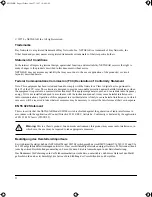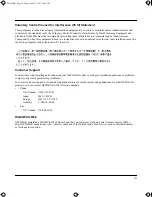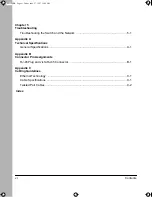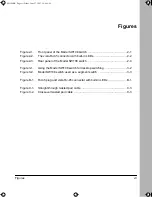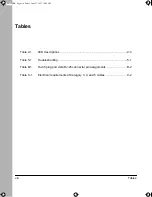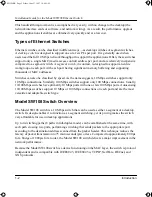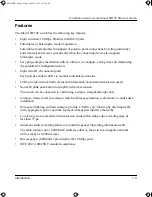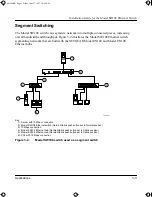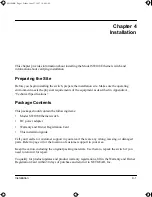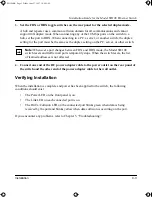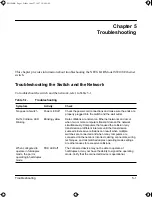
Installation Guide for the Model SW108 Ethernet Switch
1-2
Introduction
This bandwidth improvement is accomplished very easily, with no change to the desktop (the
network interface cards or software, and network wiring). As a result, the performance upgrade
and the applications it enables are obtained very quickly and at a low cost.
Types of Ethernet Switches
Ethernet switches can be classified in different ways—as desktop switches or segment switches.
A
desktop switch
is designed to support one or a few PCs per port. It is generally used when
users need the full 10 Mbps network throughput to support the applications. Often, these switches
support only a single MAC (media access control) address per port, and are relatively inexpensive
compared to a segment switch. A
segment switch
, in contrast, is designed to support an entire
workgroup on each port, with each port having significant memory buffering and supporting
thousands of MAC addresses.
Switches can also be classified by speed. As the name suggests, 10 Mbps switches support only
10 Mbps connections. Similarly, 100 Mbps switches support only 100 Mbps connections. Usually,
10/100 Mbps switches have primarily 10 Mbps ports with one or few 100 Mbps ports. Autosensing
10/100 Mbps switches support 10 Mbps or 100 Mbps connections on each port and are the most
versatile and adaptable switch type.
Model SW108 Switch Overview
The Model SW108 switch is a 10 Mbps switch that can be used as either a segment or a desktop
switch. Its design enables it to function as a segment switching, yet its pricing makes the switch
very affordable for use in desktop applications.
Up to 4 switching paths (8 paths in full-duplex mode) can be established at the same time, with
each path crossing two ports, performing switching that sends packets to the appropriate port
according to the destination address scanned from the packet header. This technique reduces the
latency of packet transmission to 75 microseconds (
µ
s) or less. Compared to approximately 800
µ
s
for a bridge or 1800
µ
s for a router, the Model SW108 switch delivers a major improvement in the
network performance.
Because the Model SW108 switch is a device functioning on the MAC layer, the switch is protocol
independent and is compatible with IEEE802.3, IEEE802.3u, TCP/IP, NetWare, DECnet, and
XNS protocols.
SW108.BK Page 2 Friday, June 27, 1997 10:48 AM
Summary of Contents for ETHERNET SWITCH SW108
Page 4: ...iv SW108 BK Page iv Friday June 27 1997 10 48 AM...
Page 12: ...SW108 BK Page 4 Friday June 27 1997 10 48 AM...
Page 20: ...SW108 BK Page 4 Friday June 27 1997 10 48 AM...
Page 24: ...SW108 BK Page 4 Friday June 27 1997 10 48 AM...
Page 30: ...SW108 BK Page 4 Friday June 27 1997 10 48 AM...
Page 36: ...SW108 BK Page 4 Friday June 27 1997 10 48 AM...


